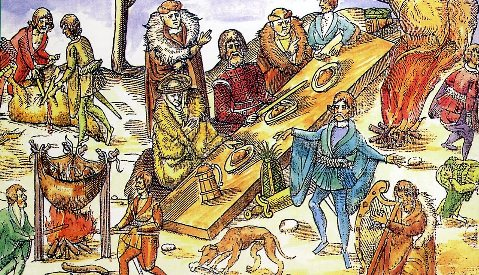Cinematic License vs. Historical Reality: A Closer Look at 'Napoleon
In the realm of historical cinema, the quest for dramatic effect often leads to a divergence from the annals of truth. Ridley Scott's "Napoleon" serves as a prime example, where the allure of narrative embellishment overshadows the rigors of historical fidelity. This film, attempting to encapsulate the grandeur and tumult of Napoleon Bonaparte's life, entwines fact and fiction, creating a tapestry that, while cinematically engaging, strays from the documented realities of the era. In this analysis, we will unravel the threads of historical inaccuracies woven into the fabric of the film, contrasting the cinematic portrayal with the authentic events and figures of the Napoleonic epoch. By examining key deviations, we aim to shed light on the complexities and pitfalls of adapting historical narratives to the silver screen.
1. Misrepresentation of Marie Antoinette's Execution
The film inaccurately portrays Napoleon witnessing Marie Antoinette's execution. In reality, on October 16, 1793, he was 830 kilometers away, leading a siege in Toulon against British forces. This significant geographical and historical discrepancy overlooks Napoleon's actual military engagements during this period.
2. The Myth of Bombarding the Pyramids
Contrary to the film's depiction, Napoleon's army never fired at the pyramids. The Battle of the Pyramids, fought nearly ten kilometers from these ancient wonders, saw Napoleon defeat the Mamluks in 1798. Importantly, the range of cannons at the time would not have allowed for such an attack, debunking this cinematic dramatization.
3. A fictitious encounter with Duke of Wellington
The movie incorrectly shows Napoleon meeting Arthur Wellesley, Duke of Wellington, in Plymouth after the Battle of Waterloo. In reality, their only encounter was on the battlefield, and even then, they were never face-to-face. The film neglects the true nature of their rivalry and interaction.
4. Misleading Age Difference Between Napoleon and Josephine
The film fails to accurately represent the age difference between Napoleon and Josephine. The casting of Joaquin Phoenix and Vanessa Kirby, with a 14-year age gap, does not align with the six-year difference in real life, where Josephine was the elder. This overlooks the nuances of their relationship, though it accurately portrays aspects like infidelity and divorce.
5. Fabrication of a Maternal Intervention
A scene where Napoleon's mother attempts to resolve the couple's childbearing issues is entirely fictional. Historically, both Napoleon and Josephine had children from other relationships, making such an intervention unnecessary and baseless. This scene, however, does highlight the family's disapproval of Josephine.
6. The Myth of the Bullet from Toulon
The film's portrayal of Napoleon holding a bullet that killed his horse at the Siege of Toulon is unfounded. While he did lose many horses and was injured in this battle, there is no record of him keeping such a memento. The scene dramatizes his bravery but strays from factual accuracy.
7. The Exaggerated Role of a Frozen Lake at Austerlitz
The Battle of Austerlitz is depicted with a grandiose but inaccurate tactic involving a frozen lake. In truth, the battle did not hinge on such a dramatic ploy. The actual battle involved complex tactics and was a testament to Napoleon's military prowess, not being reliant on simple trickery involving a frozen body of water.
Conclusion
The film "Napoleon" takes considerable artistic liberties, often at the expense of historical accuracy. While these dramatizations may enhance cinematic appeal, they distort the true events and characteristics of Napoleon's life and era. The divergence from historical facts in several key scenes underscores the importance of distinguishing between historical fiction and reality in cinematic storytelling.











